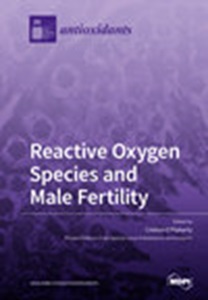Exploring the Thioredoxin System as a Therapeutic Target in Cancer: Mechanisms and Implications
IF 6
2区 医学
Q1 BIOCHEMISTRY & MOLECULAR BIOLOGY
引用次数: 0
Abstract
Cells constantly face the challenge of managing oxidants. In aerobic organisms, oxygen (O2) is used for energy production, generating reactive oxygen species (ROS) as byproducts of enzymatic reactions. To protect against oxidative damage, cells possess an intricate system of redox scavengers and antioxidant enzymes, collectively forming the antioxidant defense system. This system maintains the redox equilibrium and enables the generation of localized oxidative signals that regulate essential cellular functions. One key component of this defense is the thioredoxin (Trx) system, which includes Trx, thioredoxin reductase (TrxR), and NADPH. The Trx system reverses oxidation of macromolecules and indirectly neutralizes ROS via peroxiredoxin (Prx). This dual function protects cells from damage accumulation and supports physiological cell signaling. However, the Trx system also shields tumors from oxidative damage, aiding their survival. Due to elevated ROS levels from their metabolism, tumors often rely on the Trx system. In addition, the Trx system regulates critical pathways such as proliferation and neoangiogenesis, which tumors exploit to enhance growth and optimize nutrient and oxygen supply. Consequently, the Trx system is a potential target for cancer therapy. The challenge lies in selectively targeting malignant cells without disrupting the redox equilibrium in healthy cells. The aim of this review article is threefold: first, to elucidate the function of the Trx system; second, to discuss the Trx system as a potential target for cancer therapies; and third, to present the possibilities for inhibiting key components of the Trx system, along with an overview of the latest clinical studies on these inhibitors.探索作为癌症治疗靶点的硫氧还蛋白系统:机制与影响
细胞一直面临着管理氧化剂的挑战。在有氧生物体中,氧气(O2)被用于产生能量,并在酶促反应中产生副产物活性氧(ROS)。为了防止氧化损伤,细胞拥有一个由氧化还原清除剂和抗氧化酶组成的复杂系统,共同构成了抗氧化防御系统。该系统可维持氧化还原平衡,产生局部氧化信号,从而调节细胞的基本功能。这种防御系统的一个关键组成部分是硫氧还蛋白(Trx)系统,其中包括 Trx、硫氧还蛋白还原酶(TrxR)和 NADPH。Trx 系统能逆转大分子的氧化,并通过过氧化还原酶(Prx)间接中和 ROS。这种双重功能可保护细胞免受损伤积累,并支持细胞的生理信号传递。不过,Trx 系统也能保护肿瘤免受氧化损伤,帮助它们存活。由于肿瘤新陈代谢产生的 ROS 水平升高,肿瘤通常依赖于 Trx 系统。此外,Trx 系统还调节增殖和新血管生成等关键途径,肿瘤利用这些途径促进生长并优化营养和氧气供应。因此,Trx 系统是癌症治疗的潜在靶点。挑战在于选择性地靶向恶性细胞,同时不破坏健康细胞的氧化还原平衡。这篇综述文章的目的有三:第一,阐明 Trx 系统的功能;第二,讨论作为癌症疗法潜在靶点的 Trx 系统;第三,介绍抑制 Trx 系统关键成分的可能性,并概述有关这些抑制剂的最新临床研究。
本文章由计算机程序翻译,如有差异,请以英文原文为准。
求助全文
约1分钟内获得全文
求助全文
来源期刊

Antioxidants
Biochemistry, Genetics and Molecular Biology-Physiology
CiteScore
10.60
自引率
11.40%
发文量
2123
审稿时长
16.3 days
期刊介绍:
Antioxidants (ISSN 2076-3921), provides an advanced forum for studies related to the science and technology of antioxidants. It publishes research papers, reviews and communications. Our aim is to encourage scientists to publish their experimental and theoretical results in as much detail as possible. There is no restriction on the length of the papers. The full experimental details must be provided so that the results can be reproduced. Electronic files and software regarding the full details of the calculation or experimental procedure, if unable to be published in a normal way, can be deposited as supplementary electronic material.
文献相关原料
| 公司名称 | 产品信息 | 采购帮参考价格 |
|---|
 求助内容:
求助内容: 应助结果提醒方式:
应助结果提醒方式:


